
Cascading Succulents: A Guide to Long and Trailing Varieties

When it comes to indoor gardening, succulents have become incredibly popular in recent years. Their unique shapes, vibrant colors, and low-maintenance nature make them an ideal choice for both beginners and experienced plant lovers. While most people are familiar with the classic rosette-shaped succulents, there is another category of succulents that deserves attention: cascading succulents. These varieties have a trailing growth habit, which adds a whole new dimension to your indoor garden.
We will explore the world of cascading succulents and provide a guide on how to care for these beautiful plants. We will discuss the different types of cascading succulents, their unique characteristics, and the best ways to display and propagate them. Additionally, we will offer tips and tricks on how to ensure your cascading succulents thrive and remain healthy. Whether you are a seasoned succulent enthusiast or a beginner looking to add some greenery to your space, this article will provide you with all the information you need to successfully grow and enjoy cascading succulents.
- Choose succulents with long trailing stems for cascading arrangements
- Plant succulents in hanging baskets or tall containers to showcase their trailing growth
- Provide ample sunlight to encourage healthy growth and prevent stretching
- Water succulents thoroughly but allow the soil to dry out between waterings
- Use a well-draining soil mix to prevent root rot in cascading succulents
- Fertilize succulents sparingly to avoid excessive growth and legginess
- Prune back overgrown or damaged stems to maintain a tidy appearance
- Propagate cascading succulents by taking stem cuttings and rooting them in soil
- Protect cascading succulents from freezing temperatures by bringing them indoors during winter
- Enjoy the beauty and unique characteristics of cascading succulents in your home or garden
- Frequently Asked Questions
Choose succulents with long trailing stems for cascading arrangements
If you're looking to add a touch of elegance and drama to your indoor or outdoor space, cascading succulents are the perfect choice. These unique plants have long trailing stems that gracefully spill over the edges of containers, creating a stunning visual display.
When selecting succulents for cascading arrangements, it's important to choose varieties with naturally long stems. This will ensure that they can cascade and drape beautifully. Here are some popular succulents with long trailing stems:
- String of Pearls (Senecio rowleyanus): Known for its round, bead-like leaves, this succulent is a showstopper when it comes to trailing. The long, slender stems of the String of Pearls gracefully cascade down, resembling a string of green pearls.
- Burro's Tail (Sedum morganianum): This succulent features thick, fleshy leaves that grow in a trailing manner. The stems of the Burro's Tail can reach up to 3 feet in length and are covered in small, plump leaves, giving it a unique and eye-catching appearance.
- Donkey's Tail (Sedum morganianum): Similar to the Burro's Tail, the Donkey's Tail has long, trailing stems covered in plump, blue-green leaves. It's a hardy succulent that can withstand neglect and looks stunning in hanging baskets or cascading over walls.
- String of Bananas (Senecio radicans): This succulent gets its name from its banana-shaped leaves. The long, creeping stems of the String of Bananas cascade down, creating a whimsical and tropical effect.
When planting cascading succulents, it's important to choose containers with adequate drainage to prevent waterlogged roots. Hanging baskets, wall planters, or tall containers with trailing stems spilling over the sides are ideal choices.
Remember to provide your cascading succulents with plenty of bright, indirect light to promote healthy growth. These plants are also drought-tolerant, so be sure to let the soil dry out between waterings to prevent root rot.
With their unique trailing stems and low-maintenance care requirements, cascading succulents are a fantastic addition to any plant collection. Whether you're looking to add a touch of greenery to a hanging basket or create a stunning display on a wall, these long-trailing varieties will surely impress.
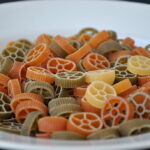 Discover the Most Vibrant and Unique Tri Color Succulent Varieties
Discover the Most Vibrant and Unique Tri Color Succulent VarietiesPlant succulents in hanging baskets or tall containers to showcase their trailing growth
Trailing succulents are a wonderful addition to any garden or indoor space. With their cascading growth habit, they add a touch of elegance and beauty to hanging baskets or tall containers. Whether you have limited space or simply want to add some visual interest at eye level, growing trailing succulents is the perfect solution.
Why choose trailing succulents?
Trailing succulents, also known as cascading succulents, are known for their ability to gracefully spill over the edges of planters, creating a stunning display. Their long, trailing stems and beautiful foliage make them a popular choice among plant enthusiasts. These succulents not only add a unique aesthetic appeal to your space but also provide numerous benefits:
- Easy to care for: Trailing succulents are low-maintenance plants, making them ideal for both beginner and experienced gardeners. They require minimal watering and can tolerate a wide range of light conditions.
- Versatile placement: Due to their trailing growth habit, these succulents can be placed in hanging baskets, window boxes, or tall containers. They can be grown indoors or outdoors, adding beauty to any space.
- Space-saving: If you have limited space, trailing succulents are a great choice. By growing them in hanging baskets or tall containers, you can maximize vertical space and create a lush, cascading display.
- Improved air quality: Like other succulents, trailing varieties help purify the air by removing toxins and releasing oxygen. Having them indoors can contribute to a healthier living environment.
Popular trailing succulent varieties
When it comes to choosing trailing succulents, there are numerous options available. Here are some popular varieties to consider:
- String of Pearls (Senecio rowleyanus): This succulent features long, trailing stems adorned with small round leaves resembling pearls. It is a visually striking plant that adds a touch of elegance to any space.
- Burro's Tail (Sedum morganianum): Known for its long, trailing stems covered in plump, tear-shaped leaves, this succulent is a favorite among many. Its unique texture and vibrant green color make it a standout in hanging baskets.
- String of Hearts (Ceropegia woodii): With its delicate, heart-shaped leaves cascading down thin, trailing vines, this succulent creates a romantic and whimsical display. It is perfect for adding a touch of charm to any room.
- Donkey's Tail (Sedum morganianum): Similar to Burro's Tail, this succulent features long, trailing stems adorned with plump, tear-shaped leaves. It is a popular choice for hanging baskets and container gardens.
These are just a few examples of the many trailing succulent varieties available. Each one offers its own unique beauty and charm, allowing you to create a personalized and captivating display.
Growing trailing succulents is a fantastic way to add visual interest and elegance to your garden or indoor space. With their cascading growth habit and low-maintenance requirements, these plants are a delight to care for. Whether you choose String of Pearls, Burro's Tail, String of Hearts, or any other trailing succulent variety, you can't go wrong. So go ahead and create a lush and breathtaking display with cascading succulents!
Provide ample sunlight to encourage healthy growth and prevent stretching
 The Prolific Succulent World: A Guide to its 'Mother of Many' Species
The Prolific Succulent World: A Guide to its 'Mother of Many' SpeciesOne of the most important factors in successfully growing cascading succulents is providing them with ample sunlight. These varieties thrive in bright, indirect light, so placing them near a south-facing window or in a well-lit area of your home is ideal.
Exposing cascading succulents to sufficient sunlight not only ensures their healthy growth but also prevents them from stretching. Stretching, also known as etiolation, occurs when succulents do not receive enough light and start to elongate in search of more. This can make them weak and susceptible to breakage.
To maximize sunlight exposure, consider rotating your cascading succulents every few weeks. This will help all sides of the plant receive equal amounts of light, preventing them from leaning in one direction. If you notice your succulents leaning towards the light source, it may be an indication that they need to be positioned closer to the window.
Remember, while sunlight is crucial for their growth, be cautious of exposing cascading succulents to harsh, direct sunlight for extended periods. This can lead to sunburn and damage the delicate foliage. If you're growing these succulents outdoors, provide them with some shade during the hottest part of the day to protect them from intense sunlight.
Overall, maintaining the right amount of sunlight is key to keeping your cascading succulents healthy, vibrant, and beautifully trailing.
Water succulents thoroughly but allow the soil to dry out between waterings
When it comes to caring for cascading succulents, proper watering is essential. These long and trailing varieties have unique needs that differ from their upright counterparts. To ensure the health and longevity of your cascading succulents, follow these watering guidelines:
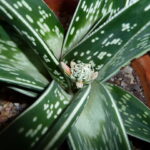 Guide to Aloe Family Diversity: Types of Succulents
Guide to Aloe Family Diversity: Types of Succulents- Thoroughly water: When it's time to water your cascading succulents, make sure to thoroughly saturate the soil. This means allowing water to flow through the drainage holes of the pot until it seeps out from the bottom. This helps ensure that the entire root system receives moisture.
- Allow drying out: After watering, it's important to let the soil dry out completely before watering again. Unlike some other plants, succulents are adapted to survive in arid conditions and store water in their leaves and stems. Overwatering can lead to root rot and other issues, so it's best to err on the side of underwatering.
- Check moisture levels: To determine when it's time to water, check the moisture level of the soil. Stick your finger about an inch deep into the soil. If it feels dry, it's time to water. If it still feels slightly moist, wait a few more days before watering again.
- Adjust watering frequency: The frequency of watering can vary depending on factors such as the climate, humidity levels, and the specific succulent species. In general, cascading succulents require less frequent watering compared to upright succulents. Monitor the moisture level of the soil and adjust your watering schedule accordingly.
- Use well-draining soil: To prevent waterlogged roots, it's crucial to use a well-draining soil mix specifically formulated for succulents. This allows excess water to flow out easily, preventing the risk of root rot. Avoid using heavy clay-based soils that retain moisture for too long.
By following these watering guidelines, you can help your cascading succulents thrive and maintain their beautiful trailing form. Remember, it's better to underwater than overwater, so always prioritize allowing the soil to dry out between waterings.
Use a well-draining soil mix to prevent root rot in cascading succulents
If you want to successfully grow cascading succulents, one of the most important factors to consider is the type of soil mix you use. These plants have shallow root systems that are susceptible to root rot if they are constantly sitting in wet soil.
To prevent this, it is recommended to use a well-draining soil mix specifically designed for succulents. This type of soil mix allows water to flow through quickly, preventing excess moisture from accumulating around the roots. A good succulent soil mix generally consists of a combination of materials such as coarse sand, perlite, and gritty substances like pumice or crushed granite.
When potting your cascading succulents, make sure to choose a container with drainage holes at the bottom. This will further ensure proper drainage and prevent water from pooling at the roots. It is also a good idea to place a layer of small rocks or pebbles at the bottom of the pot to create additional drainage space.
Remember to water your cascading succulents only when the soil is completely dry. Overwatering is one of the most common mistakes made by succulent enthusiasts, as these plants are adapted to survive in arid environments with infrequent rainfall. Checking the moisture level of the soil before watering is crucial to prevent root rot and maintain the health of your cascading succulents.
Fertilize succulents sparingly to avoid excessive growth and legginess
Succulents are known for their ability to thrive in low-nutrient environments. While they don't require frequent fertilization, providing them with the right nutrients can promote healthy growth and vibrant colors. However, it is crucial to fertilize succulents sparingly to avoid excessive growth and legginess.
 Discover Vibrant Ruby Red Succulents: Your Perfect Find
Discover Vibrant Ruby Red Succulents: Your Perfect FindWhen choosing a fertilizer for your succulents, opt for a balanced, water-soluble formula specifically formulated for cacti and succulents. These fertilizers typically have a higher phosphorus content, which helps promote blooming and root development. Avoid using general-purpose fertilizers that are high in nitrogen, as this can lead to excessive growth and weak stems.
It is important to dilute the fertilizer according to the instructions provided on the packaging. Too much fertilizer can cause damage to the succulent's roots and lead to nutrient burn. Remember, succulents are adapted to survive in nutrient-poor soils, so they do not require as much fertilizer as other plants.
During the growing season, which is usually spring and summer, fertilize your succulents once every month or every other month. Apply the diluted fertilizer to the soil around the base of the plant, taking care to avoid getting it on the leaves as this can cause burns or damage. Water the succulent thoroughly after fertilizing to ensure the nutrients are absorbed properly.
However, during the dormant winter months, it is best to refrain from fertilizing your succulents altogether. They naturally slow down their growth during this time, and providing additional nutrients can disrupt their natural resting period.
Keep in mind that not all succulents have the same fertilizer requirements. Some varieties may need more frequent fertilization, while others may require even less. It is always a good idea to research the specific needs of the succulent variety you have to ensure you are providing it with the right care.
By fertilizing your succulents sparingly and following their natural growth patterns, you can help prevent excessive growth and legginess, ensuring that your succulents remain healthy and visually appealing.
Prune back overgrown or damaged stems to maintain a tidy appearance
 Explore Luxurious Velvet-Leaf Succulents for Your Garden
Explore Luxurious Velvet-Leaf Succulents for Your GardenOne of the key aspects of successfully growing cascading succulents is to regularly prune back overgrown or damaged stems. This not only helps to maintain a tidy and well-groomed appearance but also promotes healthy growth.
When pruning your cascading succulents, it is important to use sharp and clean pruning shears or scissors. This will ensure a clean cut and minimize the risk of introducing any diseases or pests to the plant.
Start by identifying any stems that have become excessively long or leggy. These are usually the ones that are trailing far beyond the rest of the plant or have lost their compactness. Using your pruning shears, make a clean cut just above a leaf node or joint. This will encourage new growth and help the plant to maintain its desired shape.
In addition to pruning back overgrown stems, it is also important to remove any damaged or dead stems. These can be easily identified by their brown or withered appearance. By removing these stems, you not only improve the overall appearance of the plant but also prevent any potential diseases from spreading.
Remember to dispose of the pruned stems properly, as some succulents can propagate from stem cuttings. You can either discard them or consider propagating new plants by allowing the cuttings to dry out and then planting them in a well-draining potting mix.
Regular pruning, especially during the growing season, will help your cascading succulents to stay compact, vibrant, and visually appealing. It is a simple yet effective maintenance practice that should not be neglected.
Propagate cascading succulents by taking stem cuttings and rooting them in soil
Propagate cascading succulents by taking stem cuttings and rooting them in soil
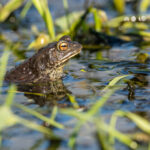 Unveiling the World of Succulent Plants and Their Unique Traits
Unveiling the World of Succulent Plants and Their Unique TraitsIf you're looking to expand your collection of cascading succulents, there's good news – you can easily propagate them by taking stem cuttings and rooting them in soil. This method allows you to create new plants from your existing ones, ensuring a steady supply of these beautiful trailing varieties.
To start the propagation process, you'll need a healthy and mature succulent plant with long, trailing stems. Here's a step-by-step guide on how to propagate cascading succulents:
Step 1: Prepare the necessary tools and materials
Before you begin, gather the following items:
- Sharp, clean scissors or pruners
- A well-draining potting mix
- Small pots or containers
- A spray bottle filled with water
- Rooting hormone (optional)
Step 2: Select healthy stems for cutting
Look for long, trailing stems that are healthy, plump, and free from any signs of damage or disease. Using your scissors or pruners, make clean cuts just below a leaf node. Leaf nodes are the small, raised bumps on the stem where leaves emerge.
Pro tip: It's important to use sharp, clean tools to minimize the risk of introducing any infections to the parent plant or the cuttings.
Step 3: Allow the cuttings to callus
After taking the cuttings, set them aside in a dry and shaded area for a few days. This allows the cut ends to callus, which helps prevent rotting once they are planted in soil.
Step 4: Prepare the pots and soil
While the cuttings are callusing, prepare the pots by filling them with a well-draining potting mix. Succulents thrive in soil that allows excess water to drain quickly, preventing root rot. You can also mix in some perlite or sand to improve drainage.
 Non-Cactus Succulents: A Guide to Other Succulent Varieties
Non-Cactus Succulents: A Guide to Other Succulent VarietiesStep 5: Plant the cuttings
Once the cut ends have callused, it's time to plant them in the prepared pots. Make small holes in the soil using your finger or a dibber, and gently place the cuttings into the holes. Ensure that at least one or two leaf nodes are buried in the soil to encourage root development.
Pro tip: If you want to increase the success rate of rooting, you can dip the cut ends in rooting hormone before planting them in the soil.
Step 6: Water and provide proper care
After planting the cuttings, water them lightly using a spray bottle. Mist the soil until it is slightly moist but not waterlogged. Avoid overwatering, as succulents are prone to root rot in soggy conditions.
Place the pots in a bright location with indirect sunlight, as intense heat or direct sunlight can scorch the delicate cuttings. Keep the soil consistently moist but not soggy, and mist the cuttings regularly to maintain a humid environment.
Pro tip: You can create a mini greenhouse effect by covering the pots with a clear plastic bag or using a propagation dome. This helps retain moisture and speed up the rooting process.
With proper care and patience, the cuttings will develop roots over time. Once the roots are well-established, you can gradually acclimate the new plants to their desired growing conditions.
By following these steps, you can easily propagate cascading succulents and expand your collection. Enjoy watching your new plants grow and cascade, adding beauty and interest to your indoor or outdoor spaces!
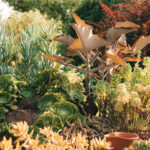 Discover the Enchanting Beauty of Ruffled Succulent Leaves
Discover the Enchanting Beauty of Ruffled Succulent LeavesProtect cascading succulents from freezing temperatures by bringing them indoors during winter
One of the key considerations when caring for cascading succulents is protecting them from freezing temperatures during the winter months. These delicate plants are not frost-tolerant and can suffer significant damage if left outdoors in cold climates.
To ensure the survival of your cascading succulents, it is crucial to bring them indoors before the first frost hits. This will provide them with the warmth and protection they need to thrive.
Here are some steps to follow when preparing your cascading succulents for winter:
- Check the weather forecast: Keep an eye on the weather forecast to determine when the first frost is expected in your region. This will help you plan ahead and bring your succulents indoors in a timely manner.
- Gradually acclimate your succulents: Before bringing your succulents indoors, it's essential to acclimate them to the indoor environment. Start by gradually reducing their exposure to direct sunlight and adjusting their watering schedule. This will help prevent shock and ensure a smooth transition.
- Choose a suitable indoor location: Select a well-lit area in your home where your cascading succulents can receive adequate sunlight. South-facing windowsills or rooms with ample natural light are ideal choices. Alternatively, you can use artificial grow lights to supplement their light requirements.
- Provide proper temperature and humidity: Cascading succulents typically thrive in temperatures ranging from 60°F to 75°F (15°C to 24°C). Additionally, they prefer low humidity environments. Ensure that the indoor location you choose provides these optimal conditions.
- Adjust watering and fertilizing: During the winter months, succulents enter a period of dormancy and require less water. Adjust your watering schedule accordingly, allowing the soil to dry out between waterings. It's also important to reduce or suspend fertilization during this time as succulents do not actively grow during winter.
- Monitor for pests: While indoors, regularly inspect your cascading succulents for signs of pests such as mealybugs or spider mites. If detected, take immediate action to prevent infestation and treat the affected plants accordingly.
By following these steps, you can ensure that your cascading succulents stay healthy and vibrant throughout the winter season. Remember, providing them with the right conditions and protection will help them thrive and continue to beautify your indoor space.
Enjoy the beauty and unique characteristics of cascading succulents in your home or garden
If you're looking to add a touch of elegance and charm to your home or garden, cascading succulents are the perfect choice. With their trailing stems and stunning foliage, these plants create a visually striking display that is sure to impress.
Why Choose Cascading Succulents?
Cascading succulents, also known as trailing or hanging succulents, have gained popularity in recent years due to their versatility and low maintenance requirements. Their unique growth habit allows them to spill over containers, hanging baskets, or rock walls, creating a cascading effect that adds depth and interest to any space.
 Fast-Growing Succulents: Seed-Grown Varieties Revealed
Fast-Growing Succulents: Seed-Grown Varieties RevealedNot only do cascading succulents look visually appealing, but they also offer a range of benefits that make them a popular choice among plant enthusiasts:
- Drought Tolerance: Like all succulents, cascading varieties are well-adapted to arid conditions and can tolerate long periods without water. This makes them an excellent choice for those who tend to forget to water their plants regularly.
- Easy Care: Cascading succulents are generally low-maintenance plants that require minimal attention. They thrive in bright, indirect light and prefer well-draining soil. As long as you provide them with the right conditions, they will reward you with their stunning growth.
- Versatility: These trailing succulents can be grown in various settings, such as hanging baskets, window boxes, or as ground cover. Their ability to adapt to different environments makes them suitable for both indoor and outdoor spaces, allowing you to enjoy their beauty wherever you choose to place them.
- Propagation: Another advantage of cascading succulents is their ability to propagate easily. Many varieties can be propagated from stem cuttings, meaning you can expand your collection or share these unique plants with friends and family.
Popular Varieties of Cascading Succulents
There is a wide variety of cascading succulents to choose from, each with its own unique characteristics and charm. Here are a few popular options:
- String of Pearls (Senecio rowleyanus): This popular trailing succulent features round, bead-like leaves that resemble a string of pearls. It looks stunning in hanging baskets or cascading over the edge of a shelf.
- Burro's Tail (Sedum morganianum): Known for its long, trailing stems adorned with plump, bluish-green leaves, the Burro's Tail is a favorite among succulent enthusiasts. It adds a touch of elegance to any space.
- String of Bananas (Senecio radicans): As the name suggests, this succulent has banana-shaped leaves that grow on trailing stems. It is a resilient plant that thrives in various conditions.
These are just a few examples of the many cascading succulents available. Each variety offers its own unique beauty and characteristics, allowing you to find the perfect fit for your home or garden.
Whether you're a seasoned plant enthusiast or just starting your succulent collection, cascading succulents are a wonderful addition that brings a touch of natural beauty to any space. Their trailing growth habit, low maintenance needs, and unique foliage make them an ideal choice for those looking to create a visually stunning display.
Frequently Asked Questions
1. What are cascading succulents?
Cascading succulents are varieties of succulent plants that have long, trailing stems or leaves, giving them a cascading or hanging appearance.
2. How do I care for cascading succulents?
Cascading succulents require well-draining soil, ample sunlight, and infrequent watering. They are generally low-maintenance plants that thrive in dry conditions.
3. Can I propagate cascading succulents?
Yes, most cascading succulents can be easily propagated through stem cuttings or leaf propagation methods. This allows you to grow new plants and expand your collection.
 Exploring the Fascinating World of Tree-Like Succulent Plants
Exploring the Fascinating World of Tree-Like Succulent Plants4. Which cascading succulents are best for indoor hanging baskets?
Some popular cascading succulents for indoor hanging baskets include String of Pearls (Senecio rowleyanus), Burro's Tail (Sedum morganianum), and String of Bananas (Senecio radicans).
If you want to read more articles similar to Cascading Succulents: A Guide to Long and Trailing Varieties, you can visit the Varieties and Colors category.


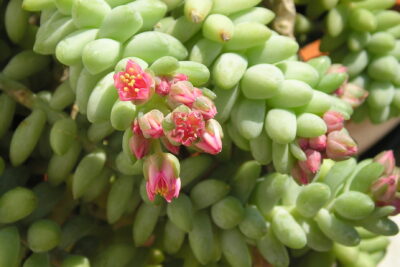



You Must Read